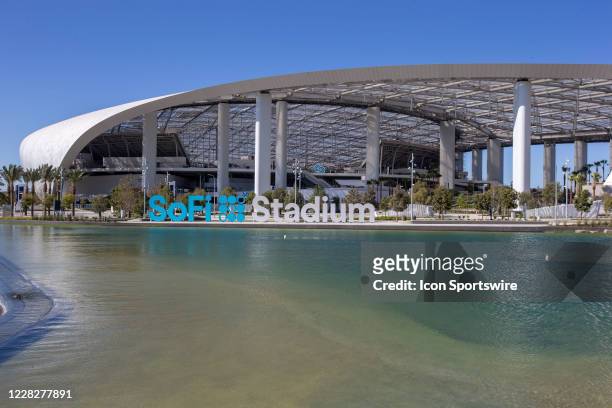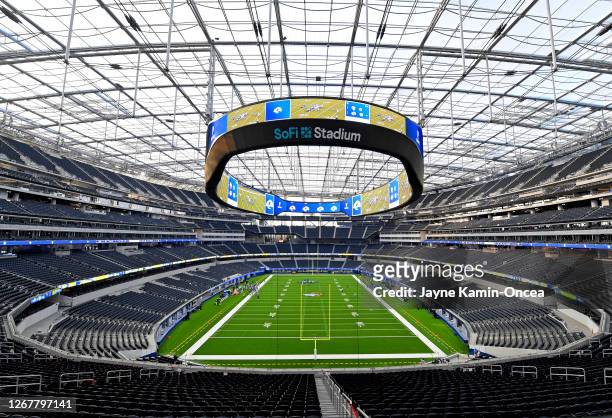I suppose if the WWE can use Roman numerals (WrestleMania XXXVIII in April, baby!), so can the NFL. So technically it is Super Bowl LVI. And it will be held in a stadium with a baffling name…SoFi.
I know most people go to Super Bowl parties for the football, but I go for the food. The food is also baffling, the only place I’ve seen a Buffalo wing casserole.

So, there you are, sitting with nine other fans on a sofa made for three. (Since we are in COVID Year III, I know there won’t be the kinds of parties we used to have, but we can dream.) When conversation about pass rush win rates dies down, first bring up the Olympics… if you read Friday’s post, “Half Way Home – The Winter Olympics.” Next you can share your art & design knowledge about the stadium. Here’s all you need to score:
SoFi Stadium was designed by HKS Architects, an international firm from Dallas that has a wide range of projects from hotels and hospitals to a makeover of the tiny Bishop’s Lodge near Santa Fe, New Mexico. Tiny compared to SoFi, an indoor-outdoor 70,000-seat venue in Inglewood, California, that can expand to hold over 100,000. SoFi is HKS’s highest profile project.

Because SoFi is just three miles away from LAX, FAA height restrictions made it impossible to build at ground level. So, seven million cubic yards of dirt were removed to place the field 100-feet below grade. Fans enter on the fifth level. But instead of being met by the usual escalators and ramps, they are guided by paths that lead them down toward the field to get to their seats. The venue promises to be the closest fans can get to the field in any NFL stadium. And the quarterback can see palm trees from the field.

As an homage to the Southern California outdoor lifestyle, the roof is supported by thirty-seven massive columns, but is not connected to the walls. This allows breezes from the ocean five miles away to flow through the structure, important since this may be the warmest Super Bowl ever.

The swooping, single layer translucent roof fills the stadium with natural light, but without solar heat gain. It covers 3.1 million square feet, making SoFi the NFL’s largest stadium. Some roof panels can slide open to regulate temperature. 27,000 LED puck lights will project images and video, so even the 80 million annual LAX passengers can watch the game as they fly over. The dual-sided video board also has an integrated sound system. That’s the kind of stadium $5.5 billion will buy you.
In an earthquake, the roof and the stadium will move independently. Like a moat, water features up to twelve-feet wide and 100-feet deep separate the roof from the stadium. The 2.2 million-pound weight of the videoboard will stabilize the roof in a big storm.
Many stadia are completely surrounded by asphalt parking lots, empty except during events, or are squeezed into densely packed urban settings. But SoFi has grounds large enough to include a new six-acre lake, 6,000-seat performance space, and new office, retail, and residential buildings. Live-work-play at its best. Designed by landscape architecture firm Studio-MLA, the 298-acre plot of land became available when the Hollywood Park Racetrack closed. The spaces surrounding the stadium are intended to provide public space, something lacking in this part of LA. And, a lot of parking.
SoFi is home to both the Los Angeles Rams and the Chargers. And when no one is tossing the pigskin, SoFi is a concert venue, already hosting Taylor Swift, Justin Bieber, The Rolling Stones, and BTS since it opened in September 2020. It will also host the opening and closing ceremonies of the 2028 Olympics. It is next to The Forum, home of the Lakers until 1999.
If you are wondering, “SoFi” is the name of a personal finance and online trading company originally called Social Finance. The company bought naming rights for the stadium for twenty years.
Well, I gotta go now. Time to put the casserole in the oven.
